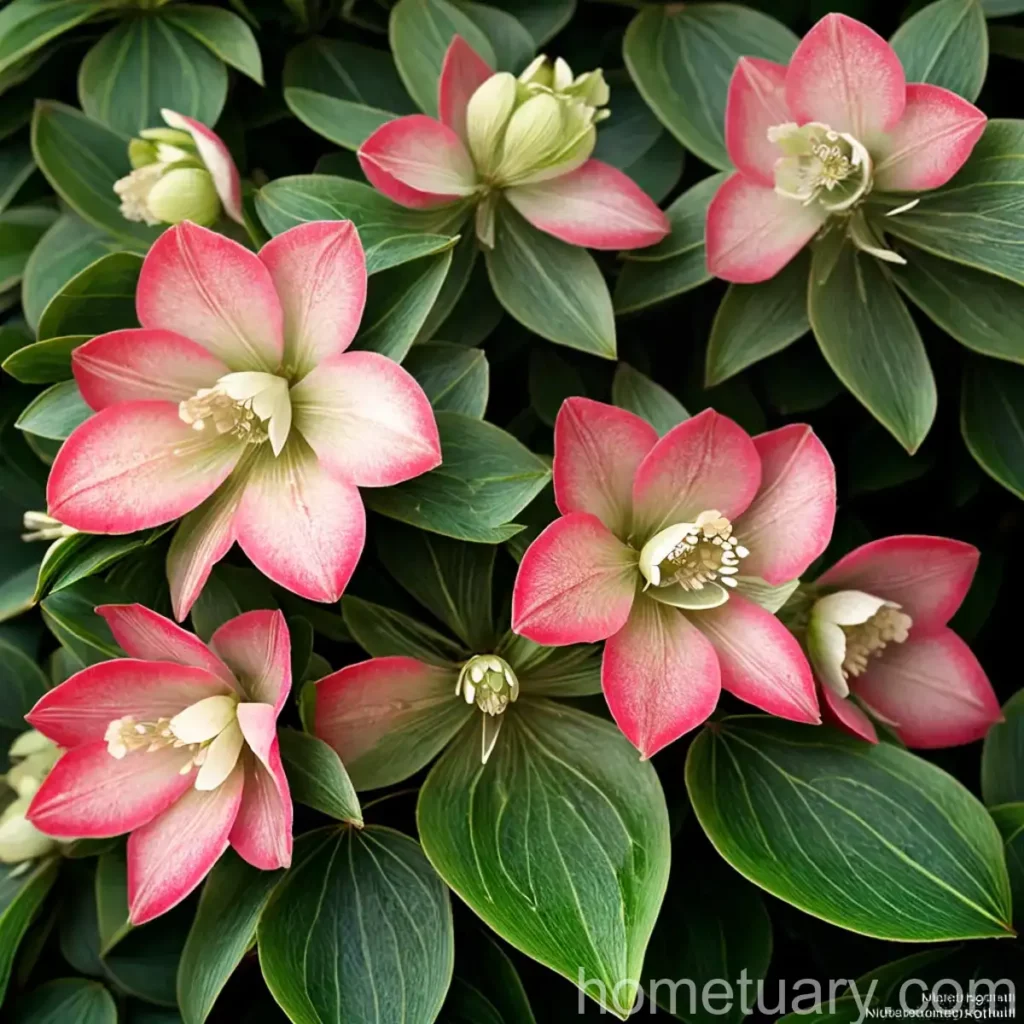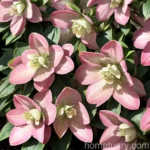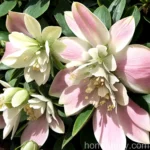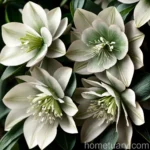Hellebore (Helleborus ‘Red Racer’) – A Plant Scientist’s Guide
Hellebore (Helleborus ‘Red Racer’) is a stunning perennial plant that has been gaining popularity due to its unique characteristics and ease of maintenance. As a plant scientist, I will delve into the various aspects related to the culture, uses, maintenance, and propagation of Helleborus ‘Red Racer’. This comprehensive guide will provide valuable insights into harnessing the full potential of this remarkable plant.
What is Helleborus ‘Red Racer’?
Helleborus ‘Red Racer’ is a hybrid variety of Hellebore, scientifically known as Helleborus orientalis. It is renowned for its exquisite flowers and evergreen foliage, making it a sought-after addition to gardens and landscapes. The striking blooms, coupled with its adaptability to various growing conditions, contribute to its allure among gardening enthusiasts.
Key Takeaways
- Scientific Name: Helleborus orientalis ‘Red Racer’
- Common Name: Red Racer Hellebore
- Growth: Perennial
- Flower Colors: Red, Pink, White, or Purple
- Foliage: Evergreen
With a rich array of colors adorning its flowers and the ability to thrive in different environments, Helleborus ‘Red Racer’ holds immense appeal for both novice and seasoned gardeners.
Culture of Helleborus ‘Red Racer’
Understanding the cultural requirements of Helleborus ‘Red Racer’ is essential for ensuring its optimal growth and development. From sunlight and water needs to soil preferences, every aspect plays a pivotal role in nurturing this plant.
Uses
Before delving into the finer details of cultivation, it’s important to highlight the versatile uses of Helleborus ‘Red Racer’:
-
Landscaping: The vibrant blooms of Helleborus ‘Red Racer’ make it an excellent choice for enhancing the visual appeal of landscapes and gardens.
-
Cut Flowers: The long-lasting, colorful flowers of Helleborus ‘Red Racer’ are popularly used in floral arrangements, adding an elegant touch to bouquets and indoor décor.
Water
Helleborus ‘Red Racer’ exhibits moderate water needs, preferring consistently moist soil. While it can tolerate short periods of drought, it thrives best when provided with regular watering, especially during dry spells. It is vital to ensure proper drainage to prevent waterlogging, which can be detrimental to the plant’s health.
Sunlight
This Hellebore variety thrives in partial to full shade, making it an ideal choice for shaded areas in gardens. It prefers dappled sunlight or filtered light, especially during the hotter parts of the day. While it can tolerate some morning sun, prolonged exposure to intense sunlight should be avoided.
Fertilizer
When it comes to fertilization, Helleborus ‘Red Racer’ benefits from a balanced, slow-release fertilizer applied in early spring. This supports healthy growth and vigorous flowering. Additionally, organic amendments such as compost can be incorporated into the soil to enhance its nutrient content and overall fertility.
Soil
The ideal soil for Helleborus ‘Red Racer’ is well-draining and rich in organic matter. It flourishes in neutral to slightly alkaline soil with a pH ranging from 6.5 to 7.5. Amending the soil with organic compost or peat moss can improve its texture and fertility, promoting optimal growth and blooming.
Pruning and Propagation
Pruning and propagation are integral aspects of horticultural practices when it comes to maintaining and expanding the population of Helleborus ‘Red Racer’.
Pruning
Pruning plays a crucial role in maintaining the health and appearance of Helleborus ‘Red Racer’. Removal of spent flowers and damaged foliage not only enhances the plant’s aesthetic appeal but also prevents the spread of diseases. It is recommended to prune the plant in late winter or early spring before the new growth emerges.
Propagation
Helleborus ‘Red Racer’ can be propagated through various methods such as division, seed propagation, and tissue culture. Division is one of the most common and reliable methods, wherein the plant’s rhizomes are carefully divided and replanted to establish new plants. Seed propagation, while viable, requires patience as it may take several years for the seedlings to reach maturity and bloom.
Container Popularity
Due to its low-maintenance nature and attractive appearance, Helleborus ‘Red Racer’ has gained popularity as a container plant. Its ability to thrive in shaded conditions makes it an excellent choice for adorning patios, balconies, and other outdoor living spaces.
Container Common Diseases
When growing Helleborus ‘Red Racer’ in containers, it is important to be mindful of potential diseases that may affect the plant. While it is relatively resistant to many common diseases, container-grown plants are susceptible to issues such as root rot and powdery mildew if proper care and maintenance are not observed.
Disease Diagnosis and Pest Control
As with any plant, Helleborus ‘Red Racer’ is not immune to diseases and pest infestations. Being aware of potential issues and implementing timely intervention measures is crucial for preserving the plant’s health and vitality.
Common Diseases
Some of the common diseases that Helleborus ‘Red Racer’ may encounter include:
-
Crown Rot: This fungal disease affects the crown of the plant, often leading to wilting and eventual death. It thrives in moist, poorly drained soils.
-
Leaf Spot: Characterized by the appearance of dark spots on the foliage, leaf spot can weaken the plant if left unchecked.
Disease Resistance
While Helleborus ‘Red Racer’ is relatively resilient, selecting disease-resistant varieties and providing optimal growing conditions can significantly reduce the risk of diseases and promote the plant’s overall vigor.
Common Pests
In addition to diseases, Helleborus ‘Red Racer’ may attract certain pests that can compromise its well-being. Some of the common pests include:
-
Aphids: These small insects feed on the plant’s sap, causing distortion of new growth and transmitting diseases.
-
Spider Mites: These tiny pests thrive in dry conditions and can cause stippling and discoloration of the leaves.
Botanist’s Tips
A key aspect of successfully cultivating Helleborus ‘Red Racer’ lies in understanding its growth habits and unique characteristics. Here are some valuable tips from a botanist’s perspective:
-
Ample Mulching: Applying a layer of organic mulch around the base of the plant helps conserve soil moisture, suppresses weeds, and enriches the soil as it breaks down.
-
Regular Inspections: Periodically inspecting the plant for signs of diseases or pest infestations enables early detection and intervention, reducing the likelihood of widespread damage.
Fun Facts
Beyond its beauty and allure, Helleborus ‘Red Racer’ harbors some fascinating aspects that contribute to its appeal and charm:
-
Lenten Rose: Helleborus species are often referred to as “Lenten Roses” due to their early blooming period during the Lenten season.
-
Toxicity: Like many members of the Hellebore genus, Helleborus ‘Red Racer’ contains toxic compounds and should be handled with caution, especially if there are pets or young children present.
As we delve deeper into the enchanting world of Helleborus ‘Red Racer’, it is evident that this plant offers much more than its captivating flowers and foliage.
Links to External Resources
For further exploration and detailed information on Helleborus ‘Red Racer’, consider the following external resources:
These resources offer comprehensive insights, practical tips, and expert guidance on the cultivation and care of Helleborus ‘Red Racer’, enriching your horticultural journey with this remarkable plant.
In conclusion, Helleborus ‘Red Racer’ stands as a captivating and resilient perennial, offering a captivating display of flowers and evergreen foliage. By understanding its cultural preferences, propagation methods, disease management, and unique attributes, you can elevate your gardening experience with this remarkable plant.
Whether adorning shaded gardens, containers, or indoor spaces, the allure of Helleborus ‘Red Racer’ is undeniable, entwining beauty and resilience in a botanical tapestry that enriches our natural surroundings.















